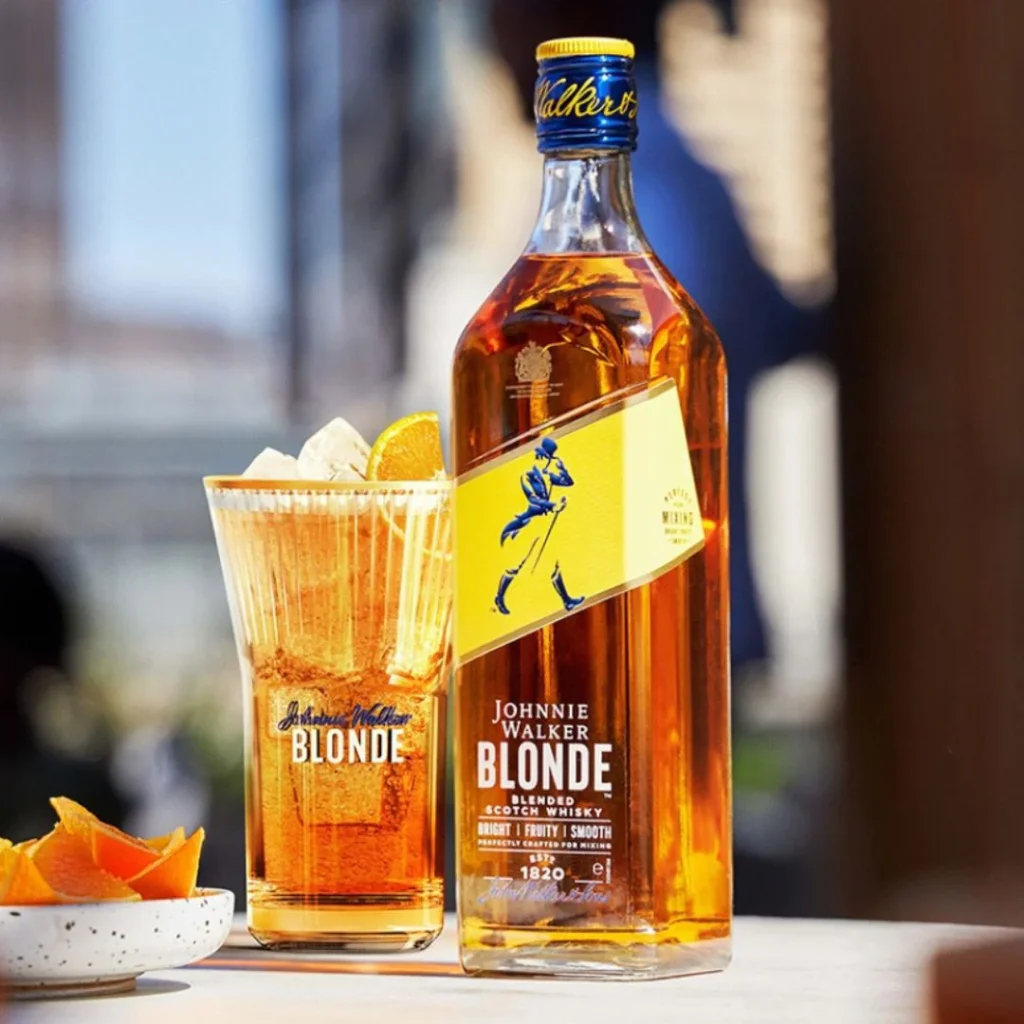Johnnie Walker: The Journey from Local Scotch to Global Whisky Icon

Johnnie Walker: The Journey from Local Scotch to Global Whisky Icon. Johnnie Walker is more than just a whisky brand—it is a symbol of perseverance, innovation, and strategic branding. What started as a small grocer’s whisky-blending venture in 1820 has grown into one of the world’s most recognized and successful Scotch whisky brands. Through calculated expansion, masterful marketing, and a commitment to quality, Johnnie Walker has remained at the forefront of the spirits industry for over two centuries. This article explores the brand’s journey, uncovering the key strategies and turning points that fueled its rise. For entrepreneurs, Johnnie Walker’s story offers valuable lessons on resilience, differentiation, and global brand-building.
Humble Beginnings: A Vision for Blended Whisky
The story begins in Kilmarnock, Scotland, where John Walker, a young grocer, started blending whisky to create a consistent and high-quality product for his customers. At the time, single malts varied widely in taste, and blending offered a way to create a more reliable and appealing whisky. This simple but innovative idea laid the foundation for what would become an enduring brand.
Upon John Walker’s passing in 1857, his son Alexander took over and introduced a critical innovation—bottling whisky in square bottles with a slanted label. This made Johnnie Walker bottles more durable for transport and instantly recognizable, setting the stage for its distinctive branding.

Expansion and Market Positioning: Creating a Global Presence
The late 19th and early 20th centuries marked Johnnie Walker’s transformation from a local whisky to an international brand. By forming strategic partnerships with distributors worldwide, the company ensured its products reached new markets. The introduction of the now-iconic “Striding Man” logo in 1908 reinforced the brand’s identity and commitment to progress—a theme that remains central to its marketing today.
Johnnie Walker also pioneered a simple yet effective way of differentiating its products: color-coded labels. The introduction of Red Label (designed for mixing) and Black Label (a premium aged blend) helped consumers navigate different whisky experiences. This clear brand segmentation played a key role in broadening its appeal across various price points and occasions.
Overcoming Challenges: Resilience Through Economic and Industry Shifts
Like any global brand, Johnnie Walker faced challenges along the way. The Prohibition era in the United States (1920–1933) and economic downturns threatened its business. However, the company strategically focused on markets where whisky consumption remained strong, ensuring continued growth.
In the mid-20th century, changing consumer preferences and the rise of new alcoholic beverages posed another challenge. Instead of resisting change, Johnnie Walker adapted by expanding its product range and refining its marketing strategies. The launch of Blue Label in 1992 reinforced its image as a high-quality luxury brand, appealing to connoisseurs and collectors alike.

Innovation in Marketing: Storytelling and Cultural Relevance
One of the most significant factors in Johnnie Walker’s success has been its powerful marketing campaigns. The brand embraced storytelling to connect with consumers on an emotional level. The “Keep Walking” campaign, launched in 1999, became an iconic message of resilience, ambition, and progress.
Additionally, Johnnie Walker has remained culturally relevant by collaborating with artists, musicians, and filmmakers. Limited-edition releases, such as Game of Thrones-inspired whisky collections, have helped attract new generations of whisky drinkers while keeping long-time enthusiasts engaged.
Lessons for Aspiring Entrepreneurs
- Build a Strong Brand Identity – From its square bottle design to the “Striding Man” logo, Johnnie Walker has consistently reinforced its identity. Entrepreneurs should invest in distinctive branding to create a lasting impression.
- Adapt and Innovate – The brand continuously evolves, whether through new products, marketing strategies, or collaborations. Businesses must stay ahead of trends and be willing to pivot when needed.
- Expand Strategically – Johnnie Walker’s global success was not accidental. Thoughtful market entry and distribution partnerships played a key role. Entrepreneurs should assess opportunities carefully before scaling their businesses.
- Tell a Compelling Story – Emotional connections drive customer loyalty. Johnnie Walker’s “Keep Walking” campaign is a testament to the power of storytelling in building a strong brand.
- Resilience is Key – Economic downturns and industry shifts are inevitable. Brands that endure, like Johnnie Walker, find ways to navigate challenges and emerge stronger.

The Future: Sustaining Growth and Innovation
Even after two centuries, Johnnie Walker continues to innovate. Its focus on sustainability—such as introducing paper-based bottles and environmentally friendly packaging—demonstrates its commitment to long-term growth while adapting to modern consumer expectations.
The brand’s enduring success serves as an inspiration for entrepreneurs looking to build businesses that stand the test of time. With a blend of authenticity, strategic marketing, and adaptability, Johnnie Walker has set a blueprint for creating an iconic global brand.
Johnnie Walker’s journey proves that success isn’t just about great products—it’s about vision, resilience, and the willingness to keep walking forward.




